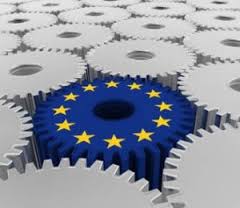
We are asking Federico Bari, CEO and founder of Ingenia, how it is possible to improve building efficiency of the so-called radiators?
The most widespread system now is the heat cost allocator with a thermostatic valve which entails different critical issues of measurement reliability. Actually, it carries out an indirect calculation of thermal energy in the environment, but it is worth mentioning that for the time being, it is the most popular system applied and the only one which can be used in column plants. Little measurement precision and the entailing inefficiency of the product is caused by the specificity of temperature measurement. If we introduced an electronic valve, both to control the temperature and to manage the measurement, we would increase the measurement efficiency. However, this technology is expensive, and it costs around 90 euros per radiator. Moreover, the battery life is quite limited, less than three years guaranteed. In fact, the cost expected by the management of assistance regarding the instrument is a hindrance for the end user and the condominium administrator, who is afraid of applying a maintenance strategy that generates losses.
And where is your research in such a scenario? “Ecotermo,” is a system that allows converting central plants into autonomous plants. In order to do this, we are experimenting with an innovative technology. Actually, if we know the system’s physics (thermal and hydrodynamic one) well and we introduce it to the algorithm under study, we will be able to know the water quantity that circulates in each radiator without the need to mount a volume meter on every radiator. Our proposal also allows spotting possible plant’s performance drops and demounting the measurement system when radiators are worn off. We are able to have a diagnosis that enables us to determine also possible blockages and defects. In such a way the system is completely under control. Moreover, it is also possible to check out not only the thermal energy, but also electric power so that kitchen appliances could be managed on the basis of preset timing. In addition, we are making a great effort in order to increase consumption efficiency. So far we have increased from two and a half times to five times and we are attempting to create and instrument that would charge by itself, through pressure change once the voltage has changed.
Have you performed an assessment based on a business model, a market target or the return on investment? We have observed that the market is not stable, it is quite the contrary, there is a yearly release of 4-5%, consisting of clients already made aware of the system who are constrained thereto.
Per ricevere quotidianamente i nostri aggiornamenti su energia e transizione ecologica, basta iscriversi alla nostra newsletter gratuita
e riproduzione totale o parziale in qualunque formato degli articoli presenti sul sito.

















